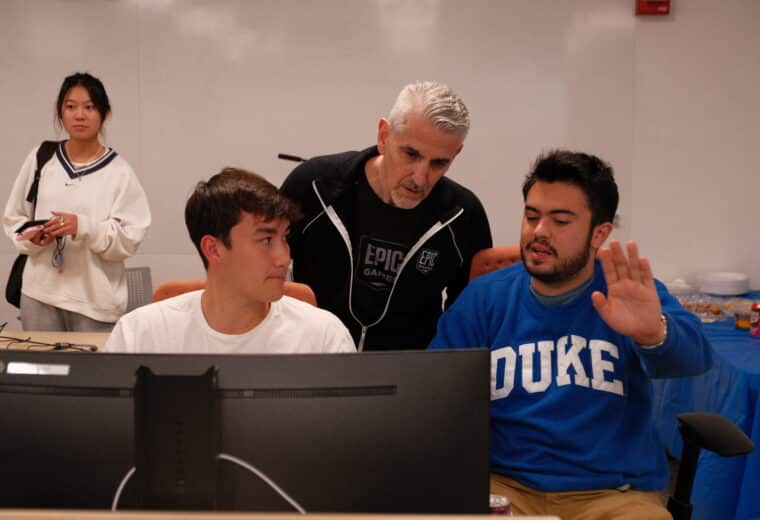
The Future of Fortnite in Education
Students in Duke’s Master of Engineering in Game Design, Development and Innovation program got hands-on with the Unreal Engine
We’re sorry—the news story you were looking for has been archived.
Please see the most recent stories below.

Students in Duke’s Master of Engineering in Game Design, Development and Innovation program got hands-on with the Unreal Engine

Duke’s Medical Robotics Symposium highlighted advancements in surgical technology, emphasizing the importance of interdisciplinary collaboration between engineers, clinicians and students

Stabilizing the glassy state of materials using rare instrumentation unlocks a new line of research for perovskites